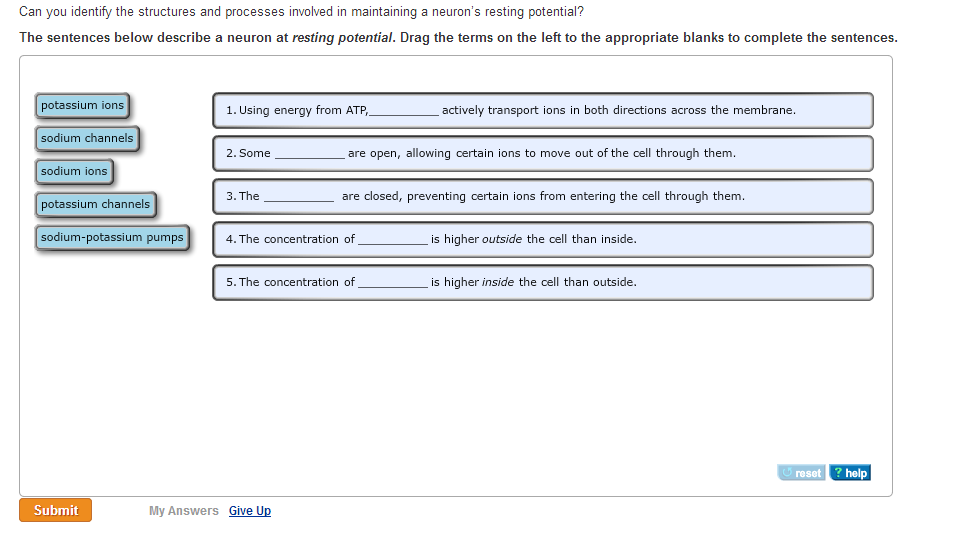It is possible that brain damage from a stroke or other injury could...
Which of the following are the four elements controlled by the nervous...
The autonomic nervous system consists of two parts: the sympathetic...
A neuron's nucleus is located in its _____.
Which of the following is part of the peripheral nervous system?
If a signal from a sending neuron makes the receiving neuron more...
The site where a neuron communicates with another cell is called the...
A neuron has a resting potential of about _____ millivolts.
What increases the speed of conduction of an action potential from the...
What is the name of the neurotransmitter that stimulates skeletal...
What is the primary function of a neuron?
A nerve impulse moves toward a neuron's cell body along _____.
Memory, sensory processing, motor responses, creativity, and higher...
The space between an axon of one neuron and the dendrite of another...
The transmission of a nerve impulse first triggers the _____.
What can you conclude from the fact that single axons may stretch from...
What part of a neuron relays signals from one neuron to another neuron...
When calcium ions enter the synaptic terminal,
Why are reflexes usually involuntary and rapid?
The stronger the stimulus, the more powerful the action potential....
Axons insulated by a(n) _____ are able to conduct impulses faster that...
Which part of the human brain is the largest in size?
What part of the nervous system is responding if you are experiencing...
A nerve impulse moves away from a neuron's cell body along _____.
What causes an action potential to be conducted along a neuron's...
An action potential moves along a(n) _____.
Which of the following is characteristic of the pain-withdrawal...
Most brain cells are
What is the purpose of action potentials in nerve cells?
Which part of the nervous system connects the brain and spinal cord...
During an action potential
The small space between the sending neuron and the receiving neuron is...
Which of these parts of the brain controls breathing and heart rate?
An impulse relayed along a myelinated axon "jumps" from...
A molecule that carries information across a synaptic cleft is a
Sodium-potassium pumps
Addictive drugs that make people feel good, such as cocaine, ecstasy,...
Which of the following defines the parasympathetic division of the...
What type of cell makes up the myelin sheath of a motor neuron?
Which of the following lists the three major parts of the brain?
A stimulus has opened the voltage-gated sodium channels in an area of...
Neurons store neurotransmitter molecules in vesicles located within...
What type of nervous system is exhibited by the flatworm?
Which of these causes the release of neurotransmitter molecules?
Which of the following statements is correct?
What are the two parts of the nervous system of all mammals?
When a neuron is at its resting potential
How do our brains determine what stimulus is stimulating it, such as...
At rest, which of these plays a role in establishing the charge...
If I step on a shard of glass while playing volleyball barefoot, which...
Which part of the neuron is responsible for responding to stimuli?
Which of the following is an accurate statement?
Which of the following events is the first to occur during an action...
When neurotransmitter molecules bind to receptors in the plasma...
















